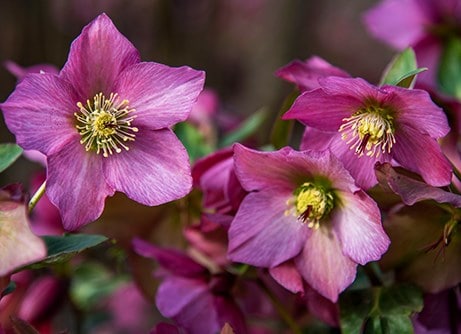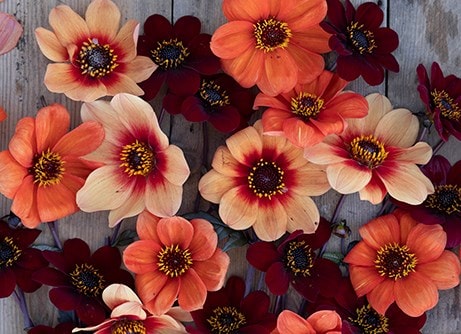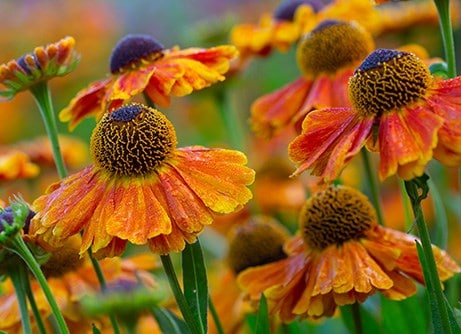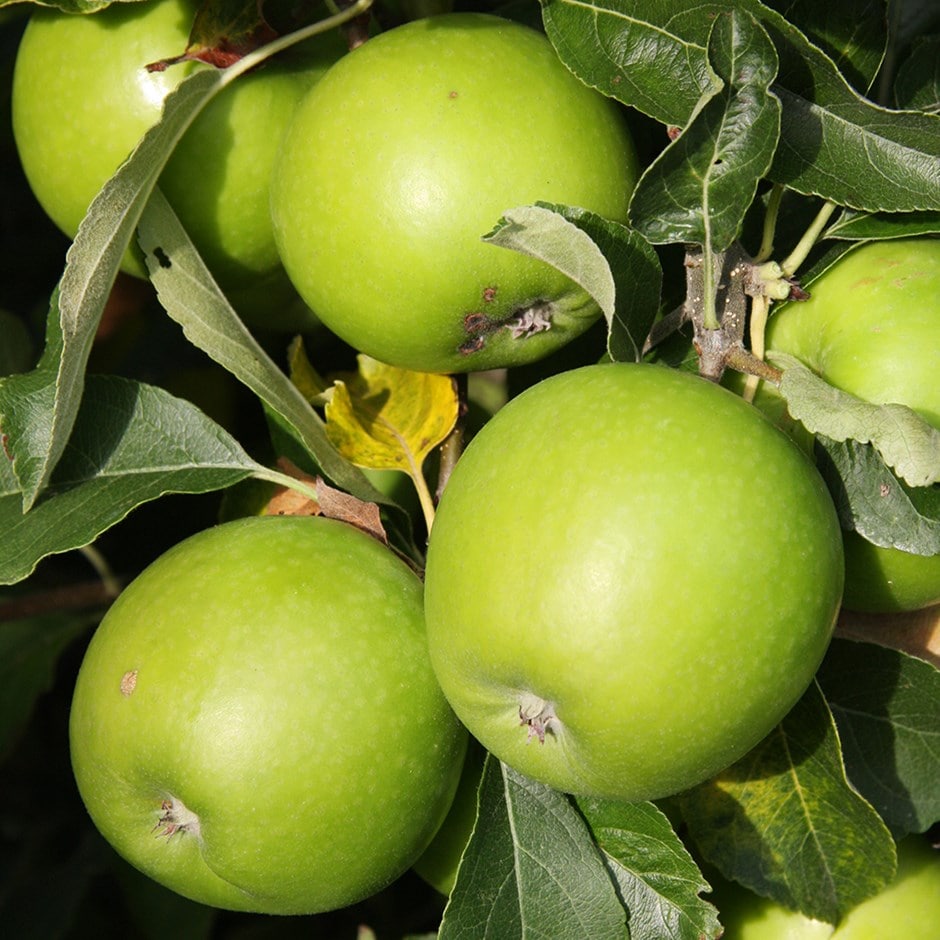One of the best loved green apples, 'Granny Smith' is a late, self-fertile dessert apple known for its bright green skin and firm, refreshing white flesh. The fruit boasts a hard, firm texture, with its crisp, juicy flesh retaining a tart and acidic taste, and remains firm even when baked, making it a popular choice for cooking. Beyond its culinary uses, this popular cultivar offers beautiful blossoms in the spring and yields a heavy crop in autumn.
With proper care, you can preserve the harvest to last you through the winter, making it a versatile and well-loved apple for eating raw or using in crumbles, pies, and jams.
Pollination information: This apple belongs to pollination group 3, and is partially self-fertile. To increase yields, it can be cross-pollinated with other apples in this group, or those from groups 2 or 4.
How to care for apple Granny Smith:
When planting your apple tree, prepare a hole up to three times the diameter of its root system. Fork over the base of the pit in readiness, incorporating plenty of organic matter into the backfill and planting hole. Place the plant in the planting hole and carefully refill, firming the soil around the roots to eliminate air pockets. Insert stake at this point if required.
Avoiding frozen and waterlogged soil, trees should be planted out as they arrive. If you've ordered a bare root tree, soak the roots in a bucket of water for half an hour prior to planting - or if this is not possible, they can be heeled in temporarily, covering their roots with soil, or potted up.
Keep the base of the tree weed free, fertilise at the beginning of each year water regularly during hot, dry spells.
The main prune should be done in the winter as long as it isn't frosty or freezing. Take out the 3D’s (dead, dying and diseased wood) and create an open shape. Then reduce the leaders back by a third. Aim to create an airy structure without any crisscrossing branches.
In August summer prune. Shorten any side shoots (or laterals) which are longer than 20cm back to three leaves. This will allow the sun to ripen the fruit and encourage more fruit buds. Make sure that the growth you’re cutting away feels firm to the touch.











